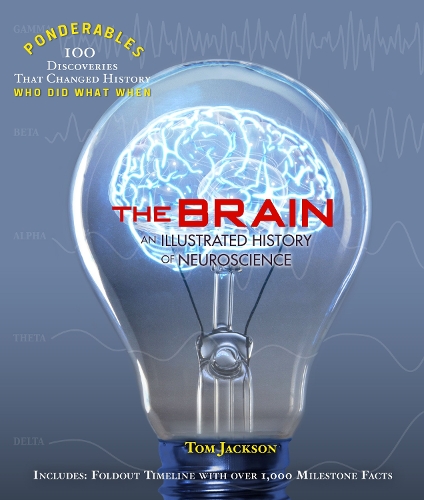
The Brain: An Illustrated History of Neuroscience (Ponderables)
Publishing Details
The Brain: An Illustrated History of Neuroscience (Ponderables)
Shelter Harbor Press
Shelter Harbor Press
1st October 2015
United States
Classifications
General
Non Fiction
Popular philosophy
612.82
Physical Properties
168
Width 235mm, Height 285mm, Spine 25mm
1247g
Description
The brain's cells are wired together with 100 trillion connections. That makes each and every human brain a contender as the most complex system in the universe, a system that endows us with an intellect that far outstripsthat of any other creature. However, there is one difficult question remaining: Are we intelligent enough to understand our own brainsFollow the journey as history's greatest brains, such as Avicenna, Thomas Willis, Charles Darwin, and Paul Broca, try to figure it out by linking the structure of the brain to its functions. How does the brain control the body, how does it make sense of our surroundings, and allow us to understand, empathise with and love other people (and their brains) And how does it create that most mysterious feature of the universe-consciousness.* Contains 100 chronological articles that tell the story of neuroscience from the dawn of history to the present day.* Authoritative text, exciting imagery, and helpful diagrams accompany each of the steps along the way.* Biographies of great neuroscientists and a functional map of the brain boosts the contents for all readers.* A simple guide to neuroscience draws together current understanding to set out the basics of the field.* 100 Ponderables also contains a 24-page removable foldout concertina neatly housed at the back of the book. This fold-out concertina includes a 12-page Timeline History of the brain and a 12-page Guide to the nervous system.
Reviews
"This book is essential for middle and high school teachers as well as career advisors; it is guaranteed to pique the interest of the most reluctant science student, making neuroscience approachable and exciting for general readers." -- Library Journal, Cristine Sharbrough, Chelmsford P.L.. MA
Author Bio
Tom Jackson is a science writer based in the United Kingdom. Tom specializes in recasting science and technology into lively historical narratives. After almost 20 years of writing, Tom has uncovered a wealth of stories that help create new ways to enjoy learning about science. He studied at the University of Bristol and still lives in the city with his wife and three children.
